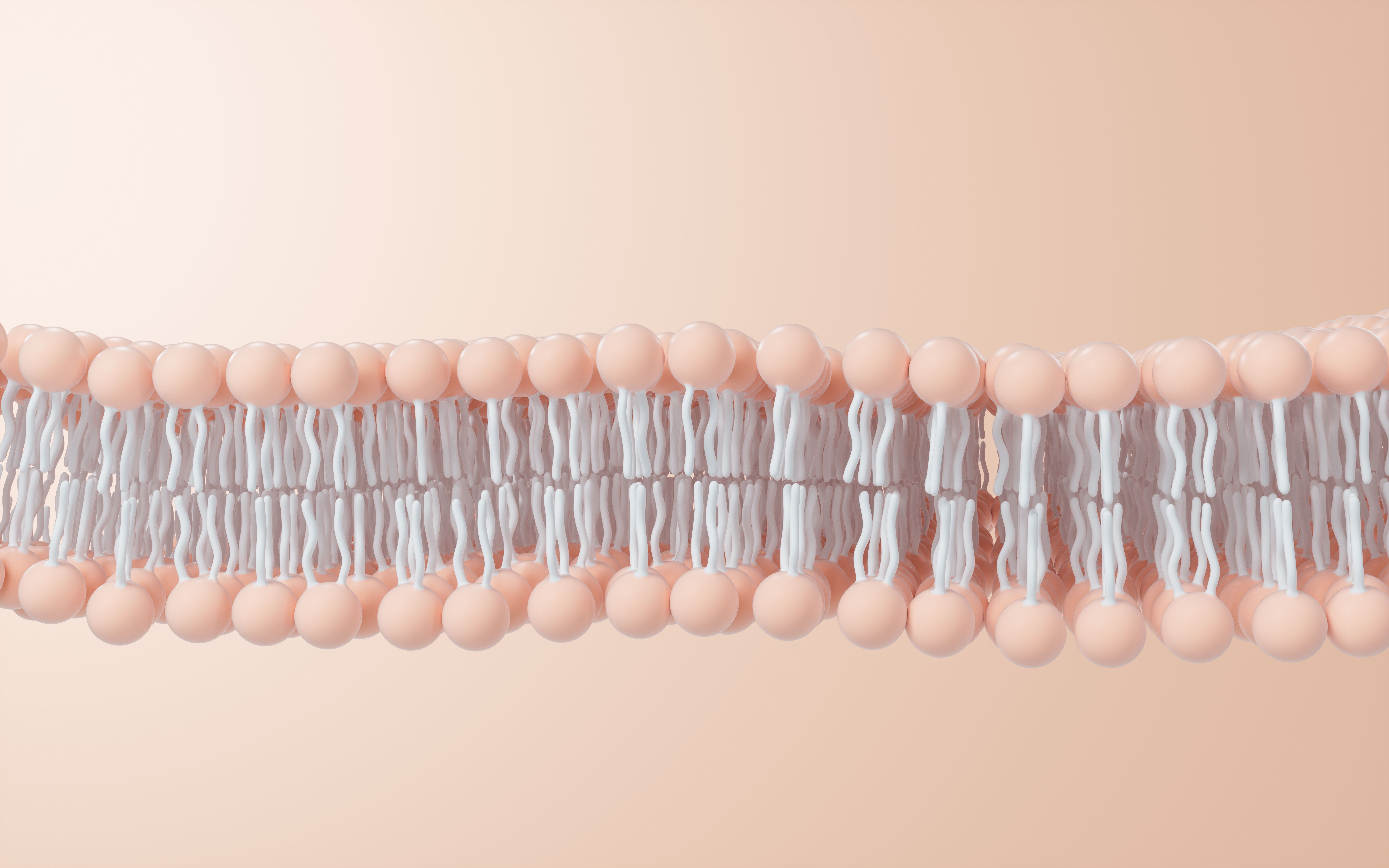New Approach to Characterizing Glycolipids Created Using IMS-MS
Scientists from the University of Utah in Salt Lake City, Utah, created a new technique to characterize lipids, specifically glycolipids, using ion mobility spectrometry–mass spectrometry (IMS-MS). Their work was published in Analytical Chemistry (1).
Cell membrane structure background, 3d rendering. | Image Credit: © Vink Fan - stock.adobe.com

IMS-MS combines ion mobility spectrometry and mass spectrometry enabling the separation, identification, and quantification of ions in complex mixtures. In IMS, ions are separated based on their size and shape as they move through a drift tube in the presence of an electric field, while in the subsequent mass spectrometry step, ions are further separated based on their mass-to-charge (m/z) ratios. This powerful combination provides comprehensive information about the size, shape, and chemical composition of ions, making IMS-MS invaluable for various applications, including the analysis of metabolites in biological samples, including glycolipids, where it offers enhanced sensitivity, specificity, and structural insights.
Lipids are vital in many biological functions, but due to their many possible isomers, it is difficult to precisely characterize them through mass spectrometry-based methods. This is especially true for glycolipids, which have more isomeric heterogeneity compared to other lipid classes due to the introduction of a carbohydrate and its corresponding linkage position and α/β anomericity at the headgroup. Liquid chromatography coupled to tandem mass spectrometry (LC–MS/MS), the technique utilized the most in lipidomics, cannot properly characterize all isomeric species. This necessitates creating different types of methodologies.
Ion mobility spectrometry–mass spectrometry (IMS-MS) has not been typically used for glycolipid analyses, but according to the authors, the technique “can provide an additional dimension of information that supplements LC–MS/MS workflows” (1). For this experiment, they enabled characterization of different glycolipid isomer sets using high-resolution cyclic ion mobility separations coupled with mass spectrometry (cIMS-MS), specifically using permethylation and metal adduction to fully resolve isomeric sphingolipids and ceramides.
From there, the group used a new metric that enablescomparing peak-to-peak resolution across varying cIMS-MS pathlengths. Through this process, the scientists found their methodologies amenable to LC–MS/MS-based workflows, all while having broad utility toward other omics-based analyses.
Reference
(1) Naylor, C. N.; Nagy, G. Permethylation and Metal Adduction: A Toolbox for the Improved Characterization of Glycolipids with Cyclic Ion Mobility Separations Coupled to Mass Spectrometry. Anal. Chem. 2023, 95 (36), 13725–13732. DOI: 10.1021/acs.analchem.3c03448
Silvia Radenkovic on Her Research and Passion for Scientific Collaboration
April 3rd 2025Radenkovic is a PhD candidate at KU Leuven and a member of FeMS. Her research focuses on inborn metabolic disorders (IMD), like congenital disorders of glycosylation (CDG), omics techniques such as tracer metabolomics, and different disease models.
Advances in Non-Targeted Analysis for PFAS in Environmental Matrices
March 27th 2025David Megson from Manchester Metropolitan University in Manchester, UK, spoke to LCGC International about the latest developments in non-targeted analysis (NTA) of per- and polyfluoroalkyl substances (PFAS) in environmental matrices based on a recent systematic review paper he has collaboratively published (1).
Study Explores Thin-Film Extraction of Biogenic Amines via HPLC-MS/MS
March 27th 2025Scientists from Tabriz University and the University of Tabriz explored cellulose acetate-UiO-66-COOH as an affordable coating sorbent for thin film extraction of biogenic amines from cheese and alcohol-free beverages using HPLC-MS/MS.






